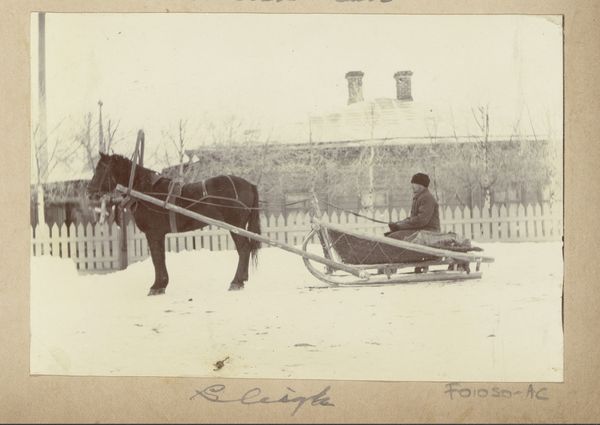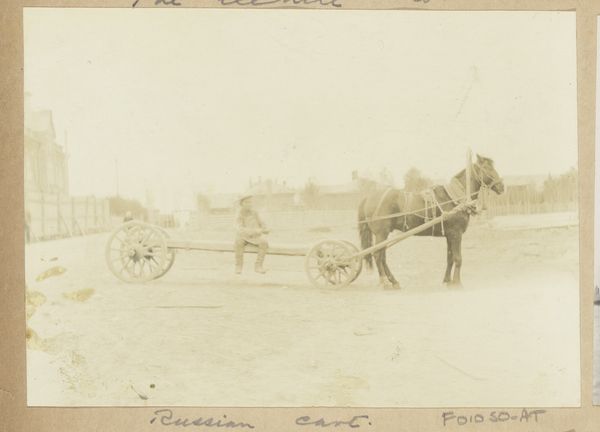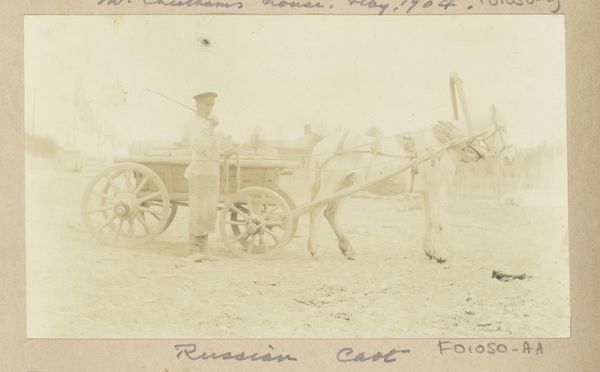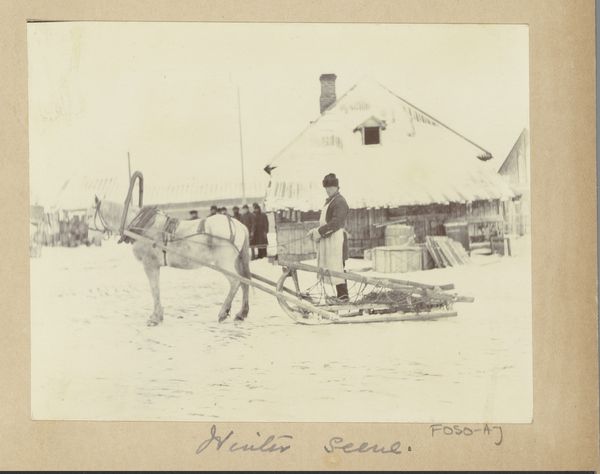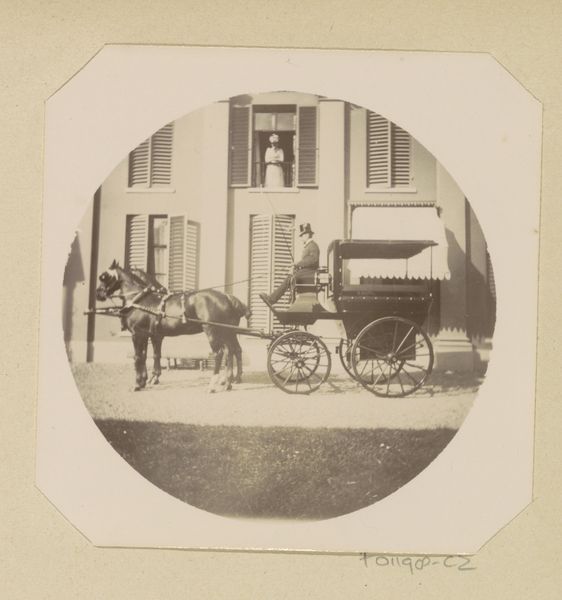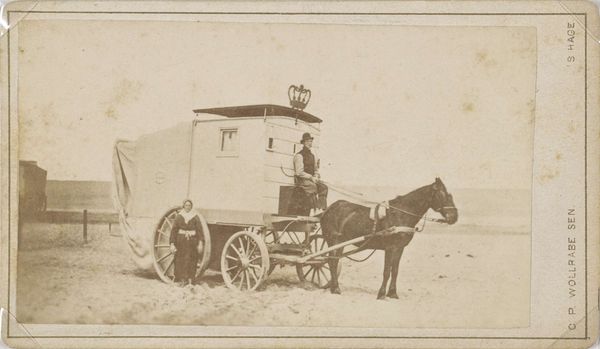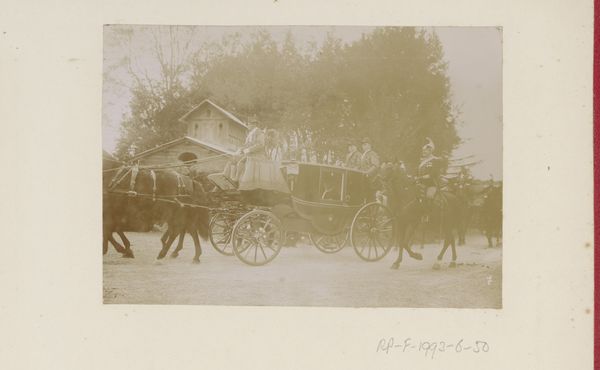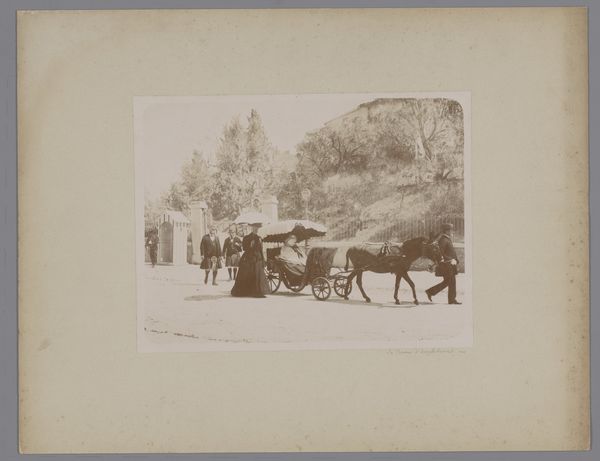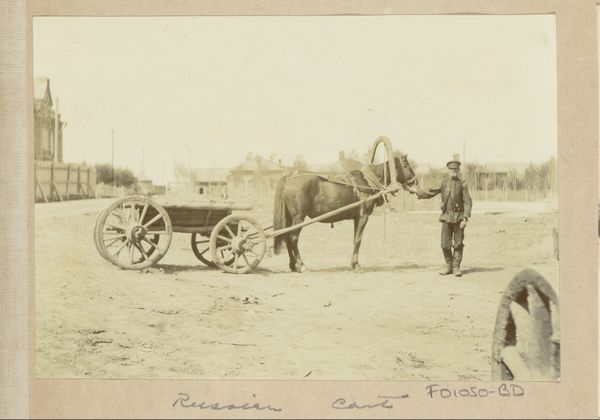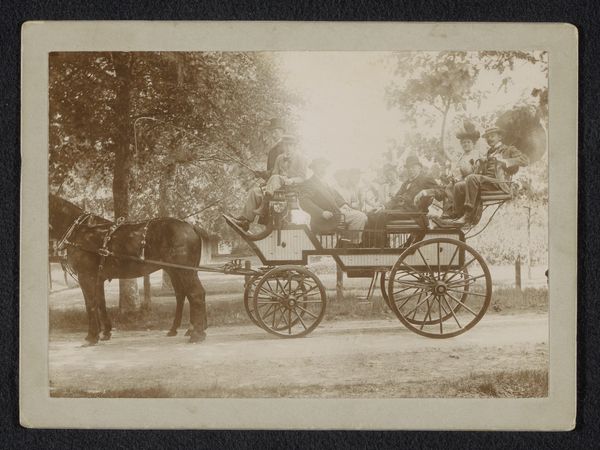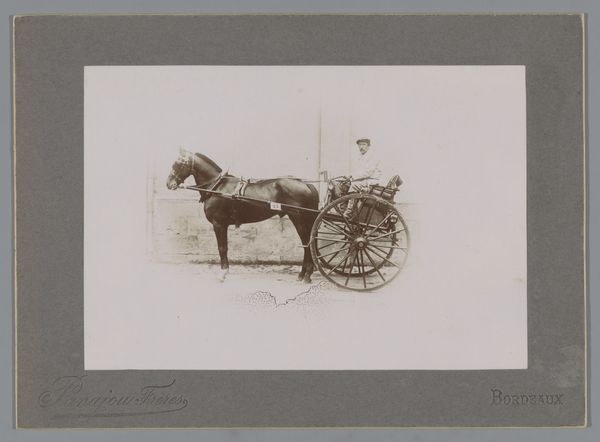
photography, gelatin-silver-print
#
landscape
#
photography
#
gelatin-silver-print
#
genre-painting
Dimensions: height 91 mm, width 115 mm
Copyright: Rijks Museum: Open Domain
Editor: Here we have "Man op een paardenslee in Rusland," or "Man on a horse-drawn sleigh in Russia," taken between 1903 and 1904. It’s a gelatin-silver print. The subdued tones create a quiet, almost wistful atmosphere. What stands out to you? Curator: This image speaks volumes about labor and everyday life. Look at the materials—the wooden construction of the sleigh, the leather and metal of the horse's harness, contrasted with the gelatin-silver print. It highlights the means of production that underpin this seemingly simple winter scene. We have this merging of craft, animal power and burgeoning industrial materials of photography itself. Editor: That's interesting, the connection to labor. I was focusing more on the landscape aspects. Is it significant that this is specifically a gelatin-silver print rather than another photographic process? Curator: Absolutely. The gelatin-silver process, by this time, was becoming the dominant method for mass production of photographs. This image then exists as a commodity itself, circulated and consumed within a burgeoning visual culture. Consider the social context. Who made this image, and for what purpose? Was it for scientific documentation, artistic expression, or simply a memento for personal consumption? What was the labour involved in making this work? These details matter. Editor: I hadn’t considered it as a commodity before, but that makes sense given the period. How do we determine its purpose without more information about the photographer? Curator: We can look at its visual language, its distribution and reception. Landscape photography, genre scenes like this – these had specific markets and audiences. We analyze the materiality of the print itself to tell us more about its context, its creation, and its consumption. We challenge the traditional high art boundaries to understand how photography functioned within a wider economy of images. Editor: This has really changed my perspective. Now I see so much more in the image than just a horse and sleigh in the snow. It really is about how the thing was made, and the cultural context that enabled that to happen. Thanks! Curator: Indeed. Materiality provides a powerful lens through which to examine not just what we see, but how and why it came to be.
Comments
No comments
Be the first to comment and join the conversation on the ultimate creative platform.
